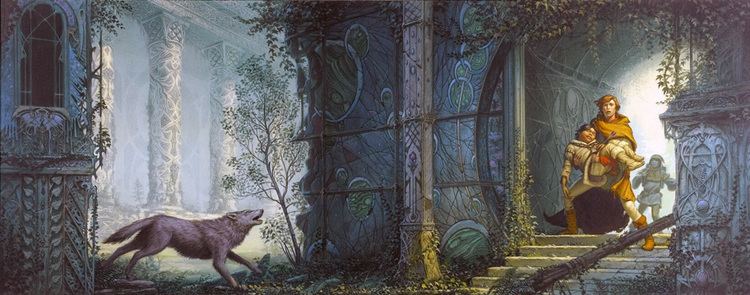 | ||
Books The Dragonbone Chair, The Stone of Farewell, To Green Angel Tower | ||
Memory sorrow and thorn
Memory, Sorrow, and Thorn is Tad Williams's epic fantasy trilogy, comprising The Dragonbone Chair (1988), Stone of Farewell (1990), and To Green Angel Tower (1993). The paperback publication of To Green Angel Tower was divided into two volumes, so paperback readers may consider Memory, Sorrow, and Thorn to be a tetralogy rather than a trilogy.
Contents
- Memory sorrow and thorn
- The World of Memory Sorrow and Thorn
- The Dragonbone Chair
- Stone of Farewell
- To Green Angel Tower
- References
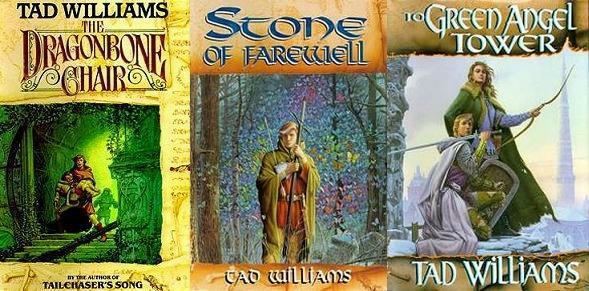
The World of Memory, Sorrow, and Thorn
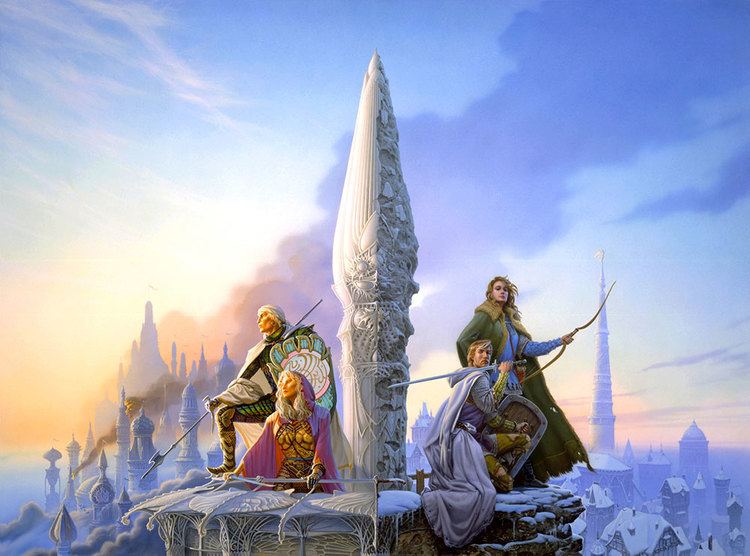
The books are set on the continent of Osten Ard, whose inhabitants include Sithi (elf-like immortals), Qanuc (troll-like mountain-dwellers), and other races, as well as several distinct human nations. The youthful conquests of King John the Presbyter (also called Prester John) united most of the human world into a single realm, but by the beginning of the first book, the former conqueror is too old and feeble to stop his sons from quarrelling. As the conflict widens throughout their world and beyond, a young orphan struggles to understand enough of it to survive.

The world and story draw upon many sources from history and folklore. Several characters' elements and experiences mirror the legends of Great Britain and other lands (e.g., King Arthur and Sir Lancelot, Alfred the Great, Baba Yaga, and Amaterasu). The dominant Erkynlanders resemble the medieval English, with Anglo-Saxon/Biblical-sounding personal names in addition to the usual castle-based feudal/agrarian setting of stock fantasy. The other peoples of Osten Ard also have identifiable real-world parallels in their names, cultures, and native tongues:

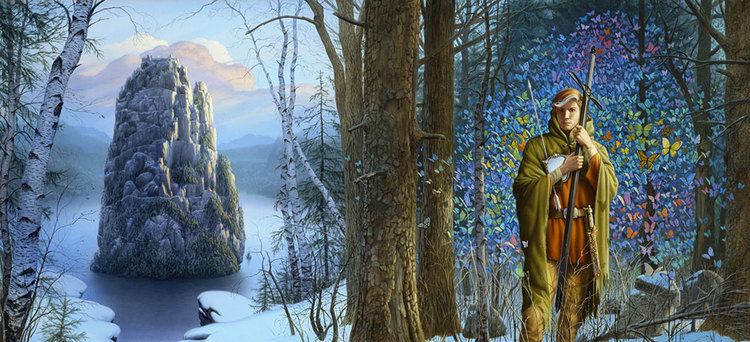
Also, despite lingering polytheistic echoes of Germanic and Celtic mythology, the main human religion is a reinvented fantasy version of Christianity mixed with Norse mythology; its primary figure, Usires Aedon, was executed by being nailed upside-down to a tree, reminiscent of the crucifixion of Christ and of Odin being tied to the world tree Yggdrasil, also possibly the crucifixion of St. Peter, who according to tradition was crucified in this position so as to not resemble Christ's death.
The Dragonbone Chair
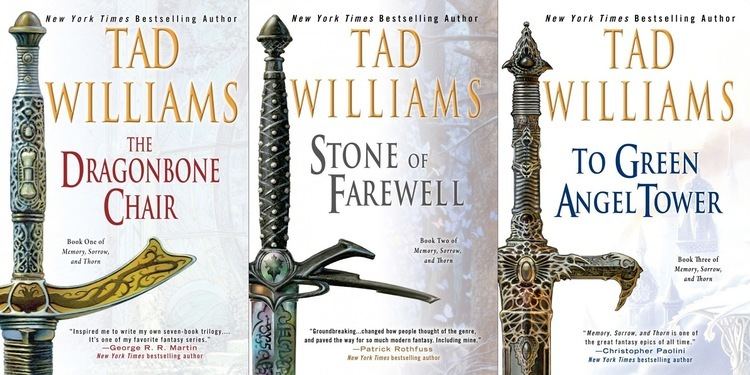
The kitchen boy Simon (known as "Mooncalf") muddles his way through the daily routines of castle drudgery in the last days of the old reign and the first few months afterward. As the new reign curdles into suspicion and discontent, the new ruler forms a supernatural alliance with the Sithi Storm-King. Simon is forced to flee into the wilderness, armed only with his mentor's biography of Prester John.
As Osten Ard is torn apart, the narrative widens into other parts of the realm through secondary viewpoint characters such as Duke Isgrimnur of Rimmersgard; Maegwin, the daughter of the Hernystiri client king; and Tiamak, a scribe in the marshes of the distant South. Despite terror, starvation, and general bewilderment, Simon manages to find sanctuary with the help of various human and inhuman fellow-travelers.
Three legendary swords — Minneyar ("Year of Memory"), Sorrow, and Thorn — are the only hope against the combined power of the two High Kings, the ancient Sithi and the new-crowned human, who between them have possession of at least one of the swords already. But another sword, once thought lost to the depths of the sea, may still exist in the frozen heights of the north....
Stone of Farewell
Now known as Simon Snowlock, because of the white tuft of hair on his forehead, the former kitchen boy continues his arduous journey in the service of the rebel Prince Josua, brother to the (human) High King, and enters the last great citadel of the Sithi.
A nationwide bestseller in the United States, the novel was well received by book critics at its 1990 publication. The reviewer for Locus called it "an epic fantasy you can get lost in for days, not just hours" (it is over seven hundred pages long), and Publishers Weekly said that Stone of Farewell is a "panoramic, vigorous, often moving sequel to The Dragonbone Chair".
To Green Angel Tower
To Green Angel Tower concludes the tale set in the fictional world of Osten Ard.
As the forces of the undead Sithi Ineluki, the Storm King, prepare for the kingdom-shattering culmination of their dark sorceries and King Elias is drawn ever deeper into their nightmarish, spell-spun world, the loyal allies of Prince Josua desperately struggle to rally their forces at The Stone of Farewell. And with time running out, the remaining members of the now-devastated League of the Scroll have also gathered there to unravel mysteries from the forgotten past. For if the League can reclaim these age-old secrets of magic long-buried beneath the dusts of time, they may be able to reveal to Josua and his army the only means of striking down the unslayable foe.
But whether or not the League is successful in its quest, the call of battle will lead the valiant followers of Josua Lackhand across storm tossed seas brimming with bloodthirsty kilpa, through forests swarming with those both mind- and soul-lost, through ancient caverns built by legendary Dwarrows and to the haunted halls of Asu'a itself—the Sithi's greatest stronghold.
When first published in the spring of 1993, the book proved problematic for publisher DAW Books, as it was simply too big to be printed in one volume. The U.S. hardcover was well over 1,000 pages long. The paperback, however, clocked in at 1,600 pages and was thus split into two volumes. In the United Kingdom the two paperback volumes were named Siege and Storm.
